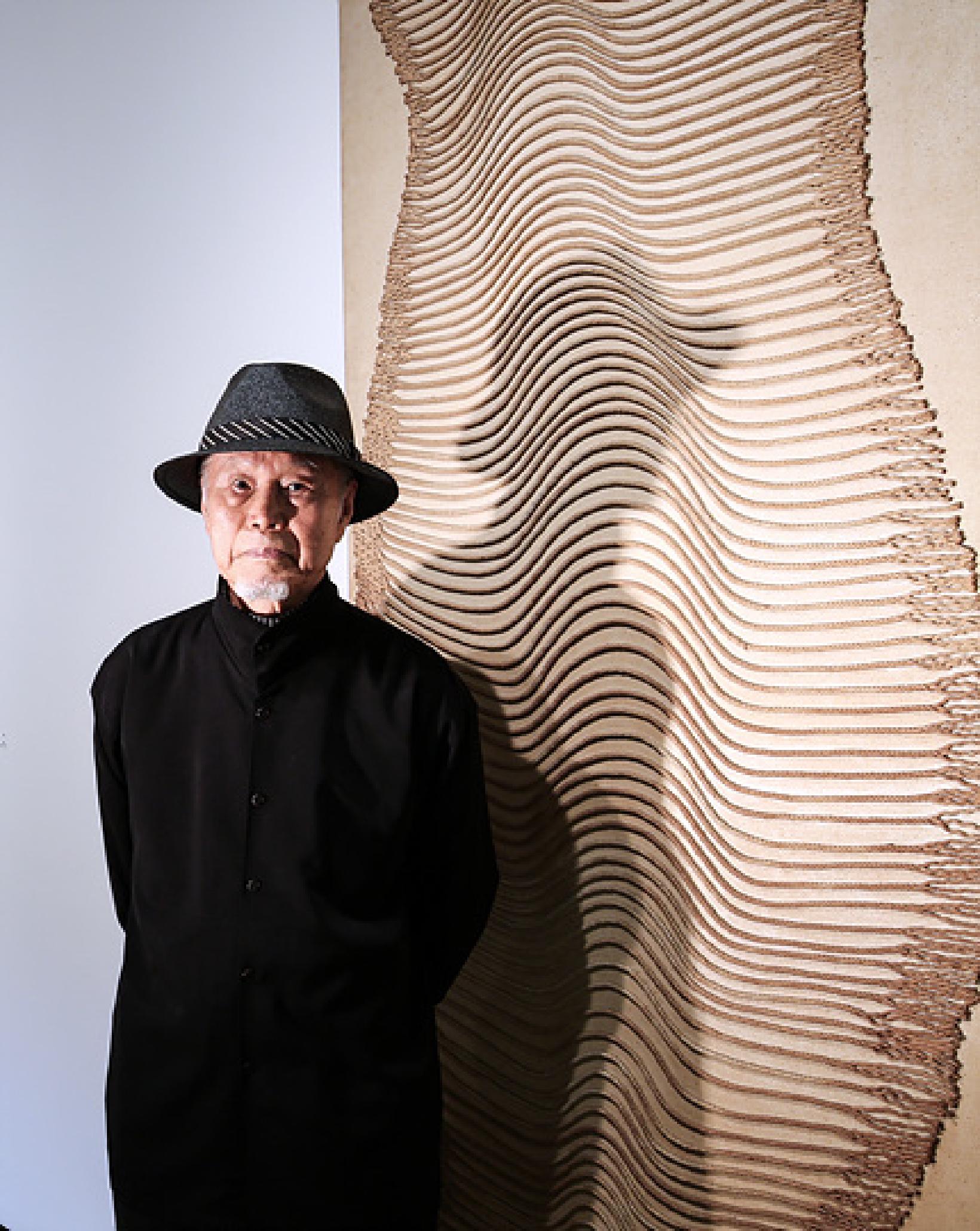Seung-taek Lee (b. 1932) is highly regarded as a leader of Korea’s avant-garde via his practice of “non-sculpture” that disrupts conventional artistic notions and questions established political and social values. His groundbreaking multidisciplinary practice utilizes traditional material and folk objects and manifests itself in site-specific environmental land works, interventions, ephemeral performance, appropriated canvas works, sculpture, and photographs.
Much of Lee’s paintings, sculptures, and environmental intervention share a kinship with both American land art and Korean shamanic traditions and embraces chance and ephemerality in its attempts to form a collaborative partnership with natural phenomena such as fire, water, wind, and smoke. Much of his work is rooted in folklore and has thus utilized traditional objects or natural materials such as tree branches, hanji paper, stones, rope and wire transformed in almost metaphysical ways. In this notion of “non-sculpture” or non-materialization or anti-concept, Lee’s practice has proven prescient given the current phenomenon appearing in much of the contemporary art discourse.
Lee used these non-materialistic and non-sculptural concepts as a manifestation of his rejection of existing ideas and orders, meaning that his work had no relation with any sculptural concept whose initial goal was plasticity resulting in his acknowledged place in Korean experimental art. Lee is not interested in what can make a work of art but in what cannot make one. He enjoys abnormality more than normality, what exists beyond common sense, and the freedom of anti-art. For this reason, he has dealt with objects that are grotesque, unpleasant, ugly, and sexually provocative, regardless of their shapes or forms because they stimulate and invigorate the artist. This embracing of the alternative or the other through radically individual choices that Lee pursued with his practice is all the more remarkable given the complicated social and political context experienced in Korea during the 60s and 70s.
For Lee, the creation of the artwork is a reconstructive concept using various levels of cultural codes that are distinct from the creative concepts of modern art. The concept of ‘non-materialization’ is a key here, distinguishing his work and placing him firmly in the vanguard of contemporary art.
Lee’s works are in numerous collections including, among others, Tate Modern, National Museum of Modern and Contemporary Art, Seoul (MMCA), Seoul Museum of Art, Rachofsky Collection and the Museum of Contemporary Art Sydney.
이승택은 한국 최초의 아방가르드 미술가다. 재야 작가로 50년을 살았던 그는 백남준아트센터 국제예술상(2009) 수상 이후 이름을 알리며 독자적 작업세계로 전세계 미술인의 극찬을 받고 있다. 작가의 작품은 런던 테이트모던 2층 전시장에 주세페 페노네(Guiseppe Penone) 등 세계 유명 작가들의 작품과 함께 ‘테이트콜렉션’으로 전시되어 있기도 하다.
이승택은 1932년 함경남도 고원군에서 태어났다. 고원에서 19살 때까지 살다 한국전쟁을 겪으며 남한으로 내려왔다. 그는 고등학교 재학 시절부터 미술에 남다른 소질을 보이며 철학에 관심을 가졌다. 홍익대학교 조각과에 재학하며 니체의 철학에 심취했고 이는 이승택 작품 세계의 핵심인 ‘부정’의 기반이 되었다. 그는 존재하는 것들을 부정하고 거부해야 새로운 것을 창조할 수 있음을 깨달았다. 그의 깨달음은 대학 1학년, 석고 데생 시간에 검은 종이 위에 흰 백묵으로 그림을 그렸다거나 1956년 국전에서 하나의 받침대 위에 두 개의 조각상을 연출한 것에서 드러난다. 당시 석고 데셍은 하얀 종이 위에 검은 연필 드로잉이었고 국전은 1좌대 1작품이 관례였다. 이승택은 현재까지도 ‘부정’의 개념을 바탕으로 다양한 형식의 전위 예술을 펼쳐오고 있다. 그는 서울대와 홍익대학교의 파벌 활동을 견디지 못하고 스스로 재야의 삶을 선택, 같은 연배의 작가들만큼 화려한 활동을 하지는 않았지만 한국을 대표하는 전위미술가 1세대라는 것은 자명하다.
이승택은 백남준아트센터 국제예술상(2009), 은관문화훈장(2013) 등을 받았다. 그는 갤러리현대 다수 그룹전에 참여했으며 2014년 개인전 〈거꾸로〉를 열었으며 런던 프리즈마스터와 조각공원에 한국 최초로 동시 참여했다. 여든이 훌쩍 넘은 지금도 매일 작업을 하며 다채로운 형식 실험을 시도하는 그는 아직 보여줄 것이 더 많다.
